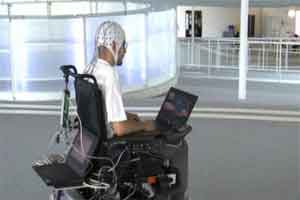- Home
- Medical news & Guidelines
- Anesthesiology
- Cardiology and CTVS
- Critical Care
- Dentistry
- Dermatology
- Diabetes and Endocrinology
- ENT
- Gastroenterology
- Medicine
- Nephrology
- Neurology
- Obstretics-Gynaecology
- Oncology
- Ophthalmology
- Orthopaedics
- Pediatrics-Neonatology
- Psychiatry
- Pulmonology
- Radiology
- Surgery
- Urology
- Laboratory Medicine
- Diet
- Nursing
- Paramedical
- Physiotherapy
- Health news
- Fact Check
- Bone Health Fact Check
- Brain Health Fact Check
- Cancer Related Fact Check
- Child Care Fact Check
- Dental and oral health fact check
- Diabetes and metabolic health fact check
- Diet and Nutrition Fact Check
- Eye and ENT Care Fact Check
- Fitness fact check
- Gut health fact check
- Heart health fact check
- Kidney health fact check
- Medical education fact check
- Men's health fact check
- Respiratory fact check
- Skin and hair care fact check
- Vaccine and Immunization fact check
- Women's health fact check
- AYUSH
- State News
- Andaman and Nicobar Islands
- Andhra Pradesh
- Arunachal Pradesh
- Assam
- Bihar
- Chandigarh
- Chattisgarh
- Dadra and Nagar Haveli
- Daman and Diu
- Delhi
- Goa
- Gujarat
- Haryana
- Himachal Pradesh
- Jammu & Kashmir
- Jharkhand
- Karnataka
- Kerala
- Ladakh
- Lakshadweep
- Madhya Pradesh
- Maharashtra
- Manipur
- Meghalaya
- Mizoram
- Nagaland
- Odisha
- Puducherry
- Punjab
- Rajasthan
- Sikkim
- Tamil Nadu
- Telangana
- Tripura
- Uttar Pradesh
- Uttrakhand
- West Bengal
- Medical Education
- Industry
Scientists Develop Mind-Controlled Wheelchair

New York: US scientists have developed a machine that enables people to navigate a robotic wheelchair through their thoughts.
"In some severely disabled people, even blinking is not possible," said Miguel Nicolelis, a neuroscientist at Duke University.
"For them, using a wheelchair or device controlled by non-invasive measures like an EEG (a device that monitors brain waves through electrodes on the scalp) may not be sufficient," he said.
"We show clearly that if you have intracranial implants, you get better control of a wheelchair than with non-invasive devices," he added.
The researchers used a computer to monitor brain signals from a rhesus macaque. They recorded signals from hundreds of neurons in two regions of the monkeys' brains that were involved in movement and sensation.
During experiments, described in a recent issue of the online journal Scientific Reports, as the animals thought about moving toward their goal, in this case, a bowl containing fresh grapes, computers translated their brain activity into real-time operation of a wheelchair.
As the monkeys learned to control the wheelchair just by thinking, they became more efficient at navigating toward the grapes and completed the trials faster, Mr Nicolelis said.
In addition to observing brain signals that corresponded to translational and rotational movement, the researchers also discovered that primates' brain signals showed signs that they were contemplating their distance to the bowl of grapes.
"This was not a signal that was present in the beginning of the training, but something that emerged as an effect of the monkeys becoming proficient in this task," Mr Nicolelis said.
"This was a surprise. It demonstrates the brain's enormous flexibility to assimilate a device, in this case a wheelchair, and that device's spatial relationships to the surrounding world," he added.
The team now hopes to expand the experiment by recording more neuronal signals to continue to increase the accuracy and fidelity of the primate BMI before seeking trials for an implanted device in humans, Mr Nicolelis said.
"In some severely disabled people, even blinking is not possible," said Miguel Nicolelis, a neuroscientist at Duke University.
"For them, using a wheelchair or device controlled by non-invasive measures like an EEG (a device that monitors brain waves through electrodes on the scalp) may not be sufficient," he said.
"We show clearly that if you have intracranial implants, you get better control of a wheelchair than with non-invasive devices," he added.
The researchers used a computer to monitor brain signals from a rhesus macaque. They recorded signals from hundreds of neurons in two regions of the monkeys' brains that were involved in movement and sensation.
During experiments, described in a recent issue of the online journal Scientific Reports, as the animals thought about moving toward their goal, in this case, a bowl containing fresh grapes, computers translated their brain activity into real-time operation of a wheelchair.
As the monkeys learned to control the wheelchair just by thinking, they became more efficient at navigating toward the grapes and completed the trials faster, Mr Nicolelis said.
In addition to observing brain signals that corresponded to translational and rotational movement, the researchers also discovered that primates' brain signals showed signs that they were contemplating their distance to the bowl of grapes.
"This was not a signal that was present in the beginning of the training, but something that emerged as an effect of the monkeys becoming proficient in this task," Mr Nicolelis said.
"This was a surprise. It demonstrates the brain's enormous flexibility to assimilate a device, in this case a wheelchair, and that device's spatial relationships to the surrounding world," he added.
The team now hopes to expand the experiment by recording more neuronal signals to continue to increase the accuracy and fidelity of the primate BMI before seeking trials for an implanted device in humans, Mr Nicolelis said.
Next Story


